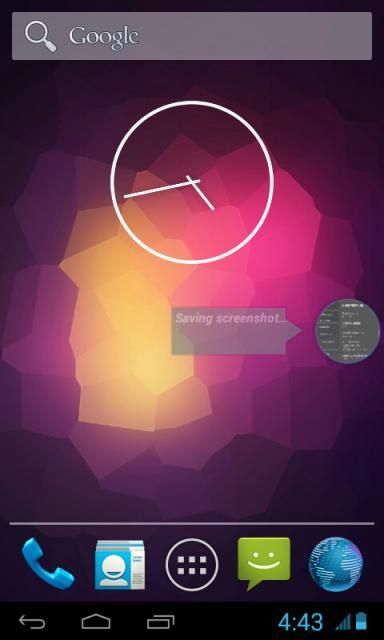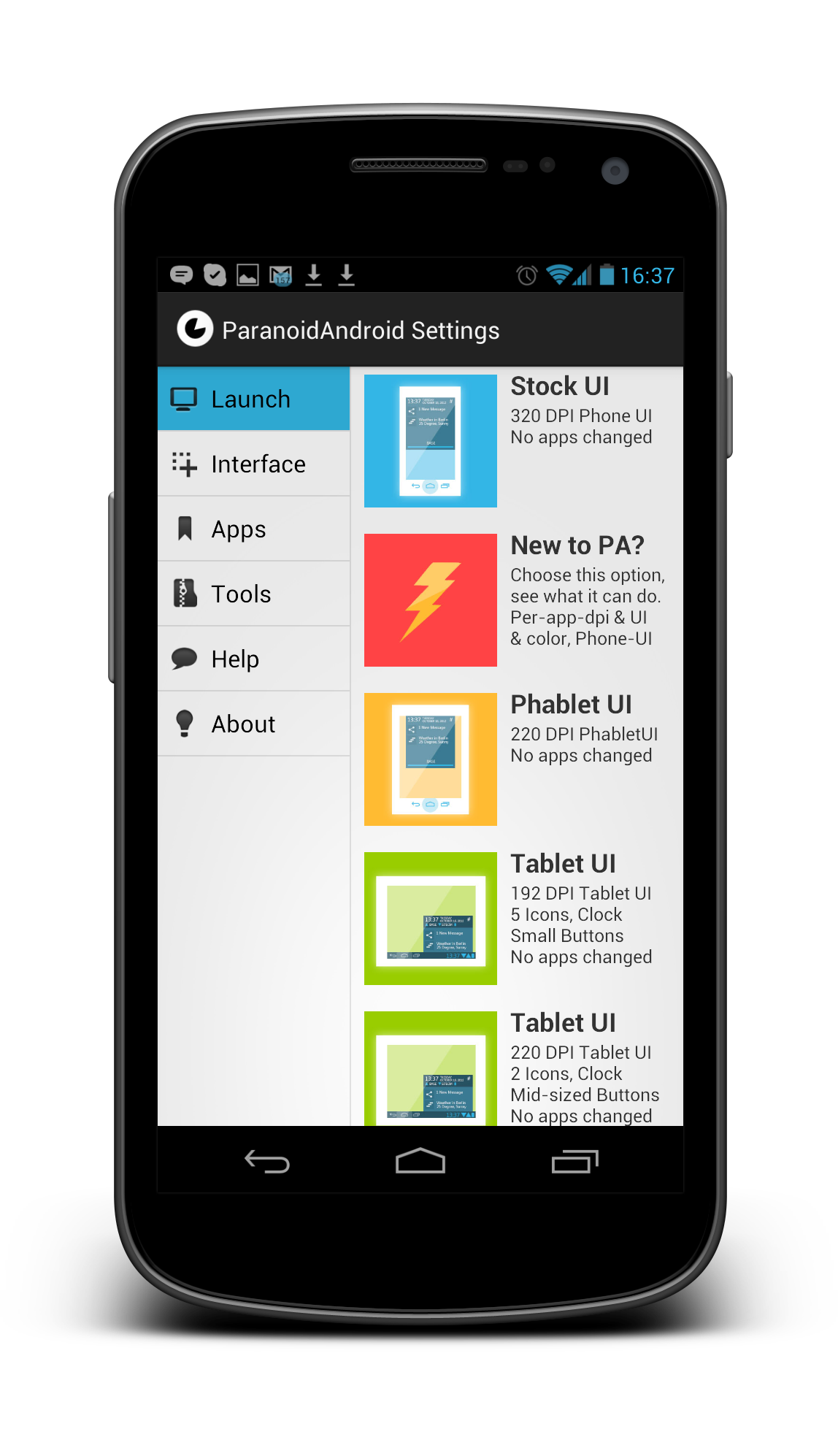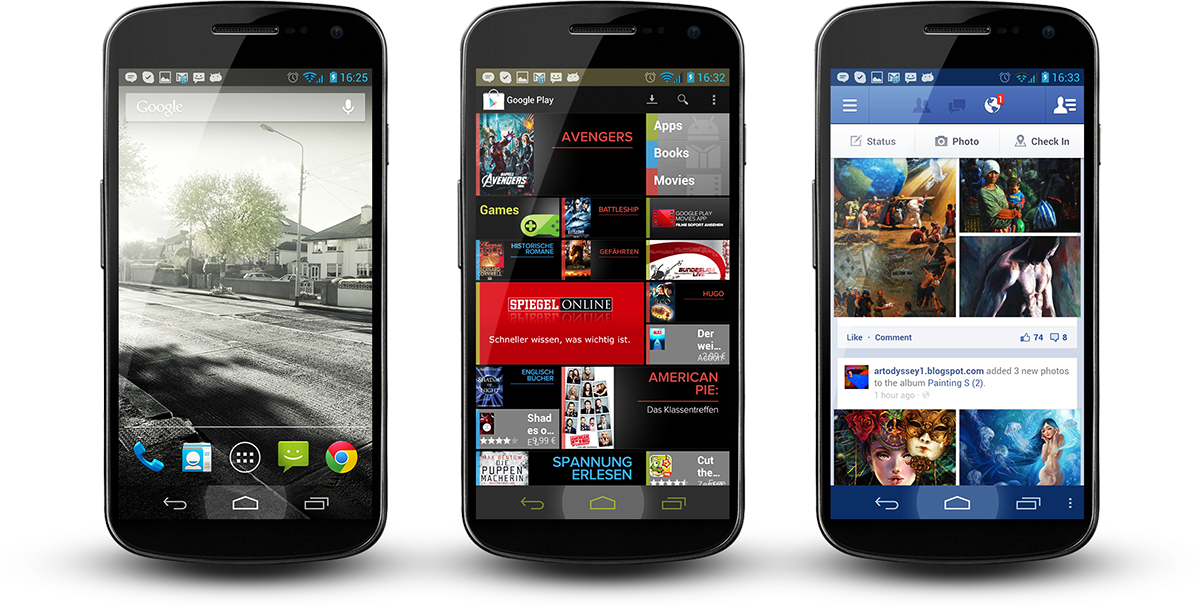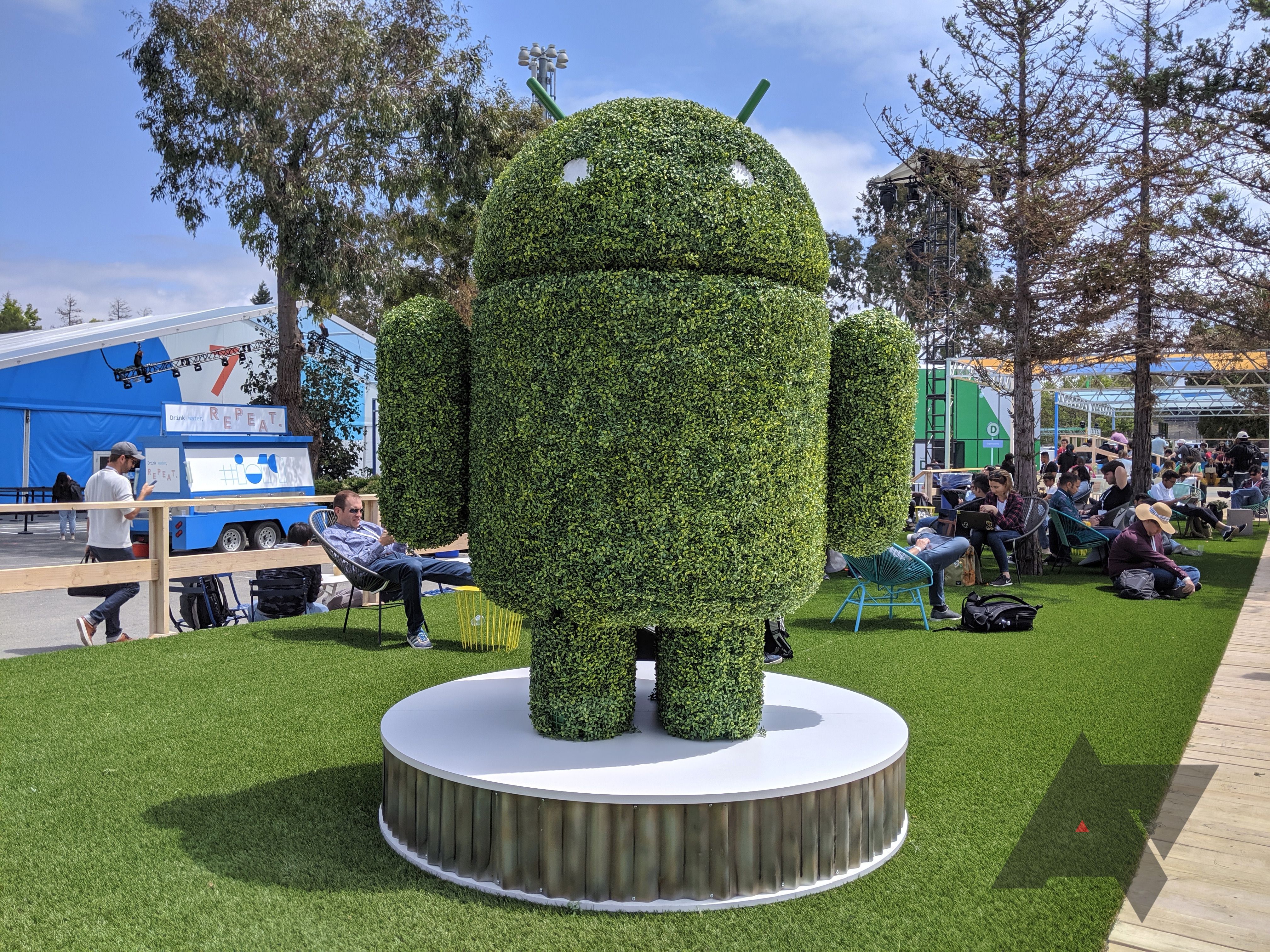I’m clearly a big fan of Android, but even I can admit that the platform took a while to hit its stride. It wasn’t until Android 4.0 Ice Cream Sandwich that Android arguably started to feel feature-complete in the face of its (dwindling) competitors. But it was the various Android 4.X Jelly Bean versions that truly made Android start to feel like home for me. It was the era of Holo’s UI refinement and declining jank, the rise of Play Services, and the golden age of Android ROMs. And ten years ago today, Android 4.1 Jelly Bean descended on the world.
A walk through Jelly Bean’s baby blue wonderland
Some readers might remember a time before Material when Android’s aesthetic was a little darker. A Tron-tinted UI called “Holo” ruled the stock Android land, with blue accents, hard angles, and dark vibes. Whole chunks of Android were dark-themed in themselves (before we all started asking for it as a feature), but it was far from a dark age.
Android 4.3 on the Galaxy Nexus, circa 2018.
I should stress that Holo, of course, actually debuted with Android 4.0, but it was the look all the way through Android 4.4. It’s a big chunk of how people will remember that period, though there might be more sentimentality than actual beauty driving those memories. When I jumped back onto a Galaxy Nexus in 2018 as part of the Android anniversary (replete with Android 4.3 Jelly Bean), the garish changes in contrast between apps and system components could be confusing and a little distracting, blinding me randomly at night and ever just making it harder to see and read details at random times.
Yes, HOLOYOLO (unarguably), but it wasn’t all good. Remember the blocky and ugly gray gradient used in the background on certain spots, like the notification shade? Google did eventually fix that, but it was an awful look. And however much you liked those electric blue accents, they were actually pretty hard to read sometimes.
In fact, that’s part of the reason Holo was ultimately left behind. Sure, it was cool in ways that are hard to define with a nerdy aesthetic (or maybe we all just really liked the Tron sequel), but it wasn’t very accessible, lacking the sort of contrast that the subsequent Material themes offered. But there was a straightforwardness and simplicity to Holo that felt right for Android at the time, an earnestness even when it was lacking. After going back through so many of the major Android releases during that anniversary celebration, I came to see Holo as the ultimate refinement of that early engineer-driven design when Android had to prove itself first on features. But there was more to Jelly Bean than just Holo.
Project Butter, the rise (and tyranny) of Play Services, and other changes
This earlier Android era was a little less structured when it came to updates before Google settled on its more recent and strict yearly release cycle. The platform’s “fragmentation” problem was in full swing, with huge feature differences between different Android versions and different Android phones.
The fact that the Jelly Bean name spanned what were three major releases at the time might make it seem like it lasted longer than it did, but the three versions were actually released by Google in just over one calendar year, from July to July 2012-2013, and Kit Kat supplanted it in October 2013. Updates were an even bigger issue back then, so a lot of third-party phones didn’t even see the first Jelly Bean release until long after the third one happened. And that’s too bad, because Jelly Bean delivered arguably one of the biggest changes to the customer experience the platform saw.
Before Android 4.1, as much as we loved the operating system, it had a long-standing reputation for being janky and laggy. Dropped frames and random hangs weren’t some kind of once-in-a-while thing; that’s just what Android was like deep down inside. And so, deep down inside, Google decided to change things.
Android 4.1 Jelly Bean debuted Project Butter, a marketed name attached to a series of changes that affected how Android functioned quite deeply. Ron Amadeo (then of Android Police, now of Ars Technica fame) did a deep dive into precisely what changed, but the short version is that Google revamped how it handled graphics processing to better lock in an expected 60hz target, paired with known technologies like double/triple buffering, reduced input latency, and even touch prediction. In Amadeo’s words, it was “about presenting a stiff upper lip to the user even though things aren't going so smoothly under the hood.” With the frankly mediocre hardware of the era, this made a huge difference. 4.2 added hardware-accelerated 2D graphics, and 4.3 further improved the efficiency of the rendering pipeline and debuted support for OpenGL ES 3.0, delivering further performance benefits — the “butter” just kept coming through the Jelly Bean era.
We might think of it as a long-standing piece of Android, but Play Services also debuted in 2012 together with Android 4.1 Jelly Bean (though it supported up to Android 2.2 Froyo when it landed). At the time, it was meant to help provide features to developers separately from Android itself to help reduce the impact fragmentation had on certain tools they would rely on, but the many-headed proprietary hydra has grown over the years and now even includes features you might think deserve to be part of Android itself. Some (like me) might say that Play Services has grown a bit too big and that this could be seen as locking necessary features behind a licensing wall, impacting the potential freedom of the platform and causing a form of fragmentation itself when companies can’t get access to it — it’s more than just Google apps and a store. However you feel, the rise of Play Services began with Android 4.1.
I don’t even have enough space to discuss all the changes Jelly Bean delivered without adding thousands of extra words:
- Multi-channel Audio and USB audio
- Android Beam (RIP)
- Expandable notifications
- Resizeable widgets
- Lock Screen widgets (RIP)
- Full external display support
- Reduced audio latency
- Bluetooth performance and reliability improvements
- Restricted profiles
All among lots of other changes, including many that could be used and combined to improve the experience of everything from the rising wearable category to accessibility, security, and more. I know we don’t get as excited in 2022 about Android updates, but back then, things were changing so fast that it was honestly pretty tough to keep up with — this was before my professional bloggin’ days.
The Android ROM golden age
That pace of change was tied to the fact that, objectively speaking, Android was still lacking at the time — and all phones were. The category wasn’t as mature as it is today, and we didn’t even fully know the features that we’d want or the tools that developers would need to fulfill them. And when we did have an idea, often it wasn’t Google that added the feature first.
Many of you probably use a gesture navigation system on your phone, dropping the old space-taking button bar in favor of (admittedly, less accessible) swipes to navigate back or home. Sometimes people joke that Google just adopted Apple’s system, but other products like the Palm Pre actually did it first. And Android’s history of the feature is deeply rooted (pun intended) in the ROM community, which was arguably at its peak during the Jelly Bean era.
A decade ago, mobile security was more of an afterthought than it is now, and a lot of smartphones could be ROMed surprisingly easily with none of the SafetyNet-type drawbacks you have today — now rooting and ROMing can basically break your phone if we’re at the wrong swing of the root-detecting-cat-and-mouse game. Magisk, long one of the most popular ways to circumvent this, didn’t even exist until Android 5.0 Lollipop
But circa Android 4.1-4.3, even folks that weren’t that technically inclined gave the idea a try, and projects with novel features proliferated. Back then, customization was the name of the game and the platform’s biggest strength. Whatever feature or change you wanted, no matter how small, you could probably find a ROM out there that let you change or adjust it.
Names like AOKP, which got started just earlier, hit their stride, popularizing features like a gesture-based navigation ring. When Google forced Android tablets into adopting a more phone-like UI, other projects like Paranoid Android (which is still around!) debuted per-app DPI settings for ultimate granularity. Arguably, Paranoid Android’s per-app color theming system may have even impacted things like Material You’s dynamic theme generation, and Google’s bubble notifications were nearly identical to Paranoid's HALO system (though it almost certainly got the idea from Facebook’s “chat heads”).



Promo images from early Paranoid Android (AOSPA) releases.
A lot of features and changes Android itself and third-party skins developed came from enthusiast projects like custom ROMs first, like customizable quick settings, screen-off gestures, theme support, simple on-device automation, app duplication, and more. The 4.X era, including Jelly Bean, is when this pipeline was feeding changes back to Google the fastest.
If you like specific features you’re using on your Android phone now, you might have the golden age of Android custom ROMs to thank for spurring that innovation.
The magical fruit
Every Android release is important as a building block of today’s software experience, but Jelly Bean is a keystone in its history, and probably even a big part of why it survived through the crucible of the early smartphone era. Because in 2012, Android’s eventual market victory wasn’t yet guaranteed.
Back then, smartphones were still new, and there were even people that thought of them as this optional thing only professionals might need — remember that? But it was a period of transition when the market was actively consolidating around a few key players. Google definitely wasn’t a loser yet, but as Microsoft proved, early success doesn’t guarantee victory. Palm had only just died in 2011 and Nokia had dropped its own OS efforts to pick up Microsoft’s software, but there was more than enough space left for failure and death. Blackberry was two years into a terminal downswing, but it was still arguably relevant, if living on borrowed time. Other new smartphone OSes were still making the news every month or two, with just about every open-source team that had the resources considering the idea. (In hindsight, any hoopla there was the same sort of too-late reactive response all too common in tech when big names are late to the party, repeated in messaging platforms following WhatsApp’s success, social media following Facebook, etc.)
Even the biggest Android fans at the time had deep complaints about Android, and Jelly Bean was a much-needed salve that proved Google couldn’t just make a platform that was easy to license, but culture and develop it into something customers would actually seek out rather than just accept as the bone broth base on a manufacturer-skinned soup. Changes delivered in and alongside Jelly Bean turned “stock Android” into a pupil-expanding phrase for enthusiasts.
On this, the anniversary of one of Android’s biggest named releases, it’s nice to reflect on just how far we’ve come. Even if we’re a little wistful of how things used to be in that almost old-west world of Android, the smartphone in your pocket or hand today owes many of its features, the fluidity of its performance, and the depth and breadth of its software ecosystem to grandpa Jelly Bean.

